Understanding the Overlap of Autism and Seizures
Autism Spectrum Disorder (ASD) and epilepsy often intertwine in complex ways, presenting unique diagnostic and therapeutic challenges. With a notable percentage of individuals with autism also experiencing seizures, exploring the biological underpinnings and treatment strategies for this dual diagnosis is imperative. This article navigates the shared genetic and neurophysiological pathways, diagnostic hurdles, and multidisciplinary treatment approaches that address both conditions holistically.
Prevalence and Clinical Overlap of Autism and Epilepsy

What percentage of individuals with autism also have epilepsy?
Approximately 9% to 19% of individuals with autism spectrum disorder (ASD) experience epilepsy, with some research noting prevalence rates as high as 30%. This highlights epilepsy as one of the most common neurological complications in autism, profoundly affecting a significant subset of the ASD population. The co-occurrence is even higher in certain genetic syndromes associated with both conditions, such as Rett’s and Fragile X.
Are there specific types of seizures unique to autism?
Seizures seen in individuals with autism are diverse and include focal and generalized types, such as focal onset impaired awareness seizures, tonic-clonic, absence, and atonic seizures. Notably, there is no seizure type or epileptic syndrome unique or exclusive to autism. This variability makes clinical diagnosis and management challenging.
What are common neurological complications and diagnostic challenges?
Seizures are the most frequent neurological complication in ASD. Differentiating between seizures and autism-related behaviors can be difficult because certain motor or staring episodes in ASD may resemble seizure activity or stereotypies. Misdiagnosis can delay necessary epilepsy treatment. Electroencephalography (EEG) helps identify epileptiform abnormalities in about 20-30% of individuals with ASD and epilepsy, aiding in accurate diagnosis.
What do comorbidity statistics reveal?
The overlap between autism and epilepsy is substantial, with approximately one-third of individuals with ASD also having epilepsy. Additionally, children with epilepsy may have an increased risk of developing autism, especially if infantile spasms occur early in life. Females with autism have a higher likelihood of epilepsy compared to males. This intertwined relationship suggests shared underlying mechanisms and the need for integrated clinical care.
| Aspect | Detail | Implication |
|---|---|---|
| Prevalence of Epilepsy in ASD | 9% to 19%, up to 30% in some studies | High comorbidity requiring careful screening |
| Seizure Types in ASD | No seizures unique to ASD; includes focal and generalized types | Complexity in clinical diagnosis |
| Neurological Complications | Seizures are the most common neurologic issue | Necessitates epilepsy evaluation in ASD patients |
| Diagnostic Challenges | Overlapping features between stereotypies and seizures | Risk of misdiagnosis; EEG and clinical expertise needed |
| Gender Differences | Females with ASD more likely to have epilepsy | May guide personalized monitoring and treatment |
Genetic and Neurophysiological Connections Between Autism and Epilepsy
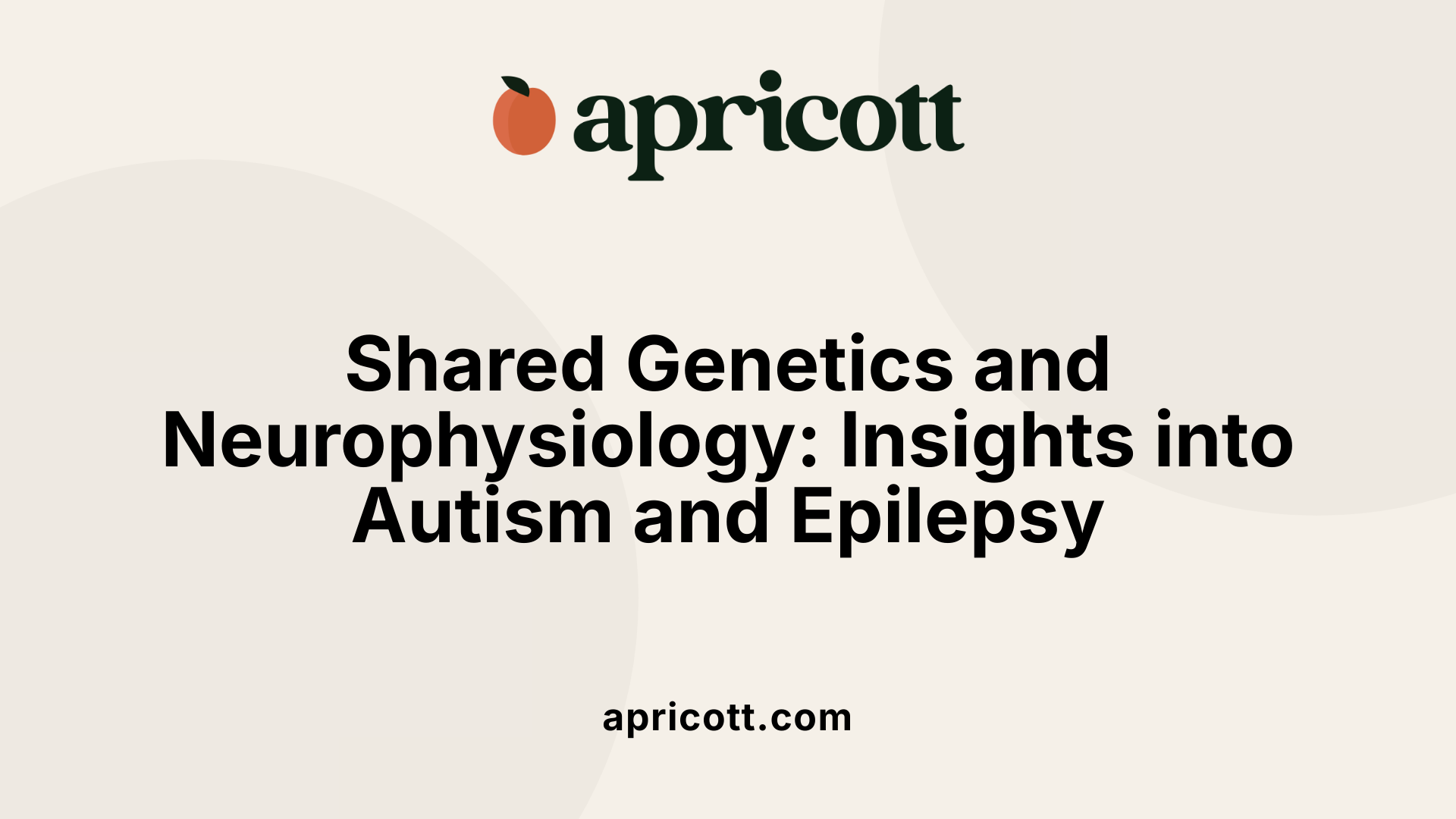
What shared gene mutations are implicated in both autism and epilepsy?
Several genetic mutations play a significant role in the occurrence of both autism spectrum disorders (ASD) and epilepsy. Notably, mutations and copy number variants in genes such as SHANK3, CNTNAP2, and NLGN4X have been identified in individuals with either or both conditions. These genes are critical for proper neuronal function and communication, and alterations can disrupt brain development and signaling.
How do synaptic abnormalities contribute to both conditions?
There is strong evidence indicating that abnormalities in synaptic structure and function underlie both autism and epilepsy. Neuroligins and neurexins—proteins essential for synapse formation and maintenance—show altered expression or function in affected individuals. These synaptic disruptions lead to imbalances in neural circuitry, which can manifest as autistic behaviors and increased susceptibility to seizures.
What is the role of GABAergic signaling dysfunction in autism and epilepsy?
Dysfunction in GABAergic signaling, the inhibitory pathway critical for controlling neuronal excitability, is a shared molecular feature in autism and epilepsy. Impaired GABAergic transmission can cause neuronal hyperexcitability, which contributes to the development of seizures and may also impact social cognition and behavior typical of ASD.
Which genetic disorders link seizures and autism?
Certain well-characterized genetic syndromes, including Rett’s syndrome, Fragile X syndrome, Angelman syndrome, and Prader-Willi syndrome, are commonly associated with both seizures and autism spectrum features. These disorders often involve widespread neurodevelopmental abnormalities affecting synaptic function and neuronal connectivity.
This genetic and neurophysiological overlap highlights a bidirectional relationship between epilepsy and ASD, suggesting intertwined developmental pathways. Understanding shared mechanisms can guide more effective diagnosis, management, and therapeutic development for individuals affected by both conditions.
Diagnosis: Differentiating Seizures from Autism-Related Behaviors
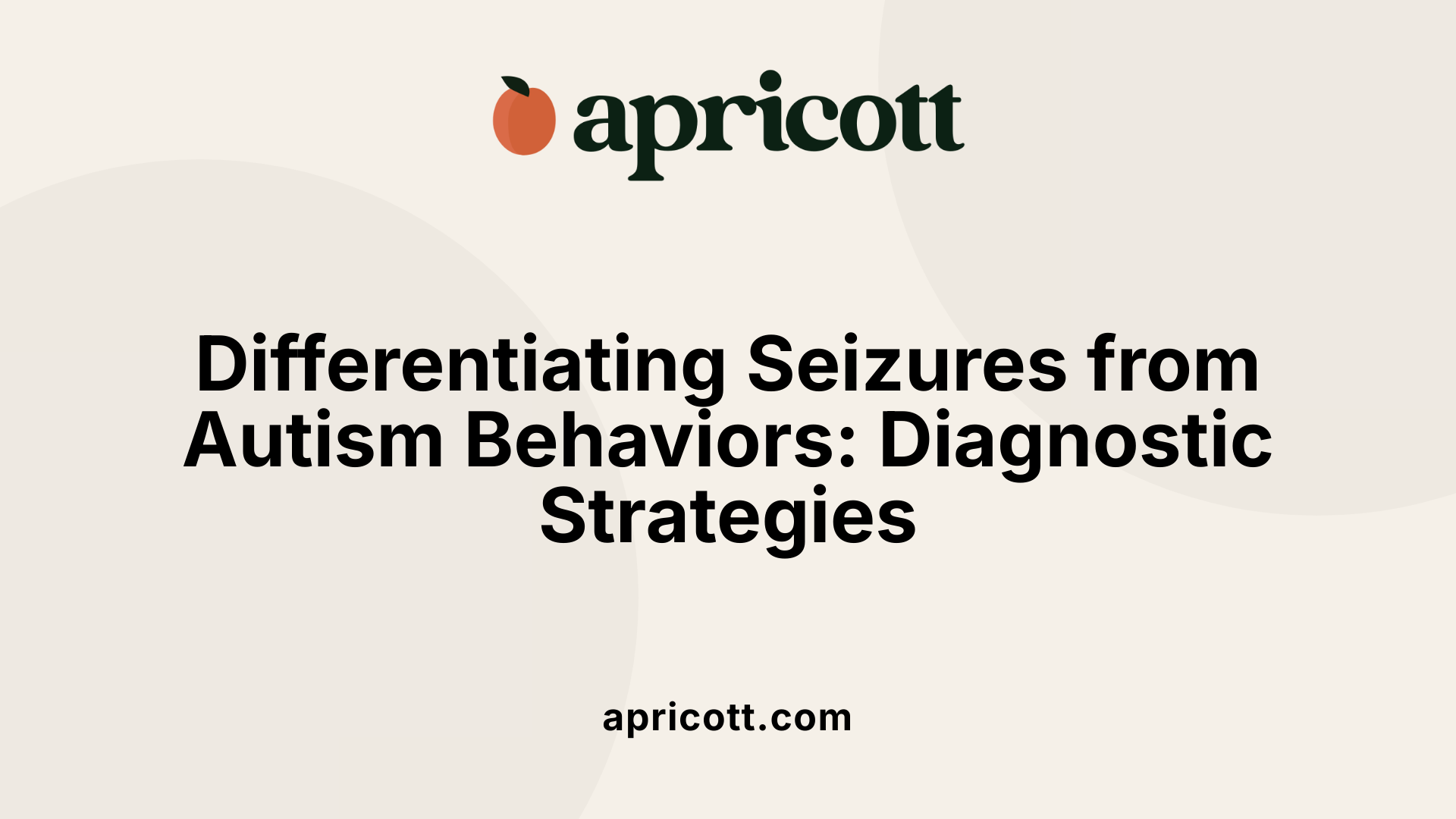
Challenges Distinguishing Seizures from Stereotypies
One of the primary diagnostic challenges in children with autism spectrum disorder (ASD) is differentiating epileptic seizures from autism-related stereotypical behaviors. While seizures involve unprovoked neuronal misfiring causing involuntary movements or altered consciousness, stereotypies in ASD are typically voluntary and repetitive behaviors. Manifestations such as staring spells, stiffening, rhythmic shaking, or loss of attention may overlap, often leading to confusion. This overlap can result in misdiagnosis, delaying appropriate epilepsy treatment.
Role of EEG and Neuroimaging
Electroencephalography (EEG) serves as a critical diagnostic tool, revealing epileptiform abnormalities in about 20-30% of ASD individuals with epilepsy. EEG, coupled with neuroimaging methods like MRI or CT, assists in identifying seizure types and underlying neurological causes. Together, these tools help to distinguish epilepsy from behavioral issues by revealing specific electrical activity and structural brain abnormalities associated with seizures.
Importance of Thorough Clinical and Neuropsychological Assessment
Accurate diagnosis demands comprehensive clinical evaluation, including detailed history taking and neurological examination. Neuropsychological assessments contribute valuable insights into brain development, cognitive strengths, and weaknesses, guiding tailored treatment plans. Collaboration among epileptologists, developmental pediatricians, and neuropsychologists ensures a holistic approach that addresses both seizure control and autism-related challenges.
Misdiagnosis Implications
Failure to properly differentiate seizures from stereotypical behaviors can lead to inappropriate management, with potential risks including uncontrolled seizures and unnecessary medication side effects. Misdiagnosis may also postpone crucial interventions such as anti-epileptic drugs (AEDs), dietary therapy, or surgical options. Thus, thorough assessment and careful interpretation of clinical signs and diagnostic tests are essential to optimize outcomes for patients with co-occurring ASD and epilepsy.
Comprehensive Evaluation and Diagnostic Tools for Epilepsy in Autism
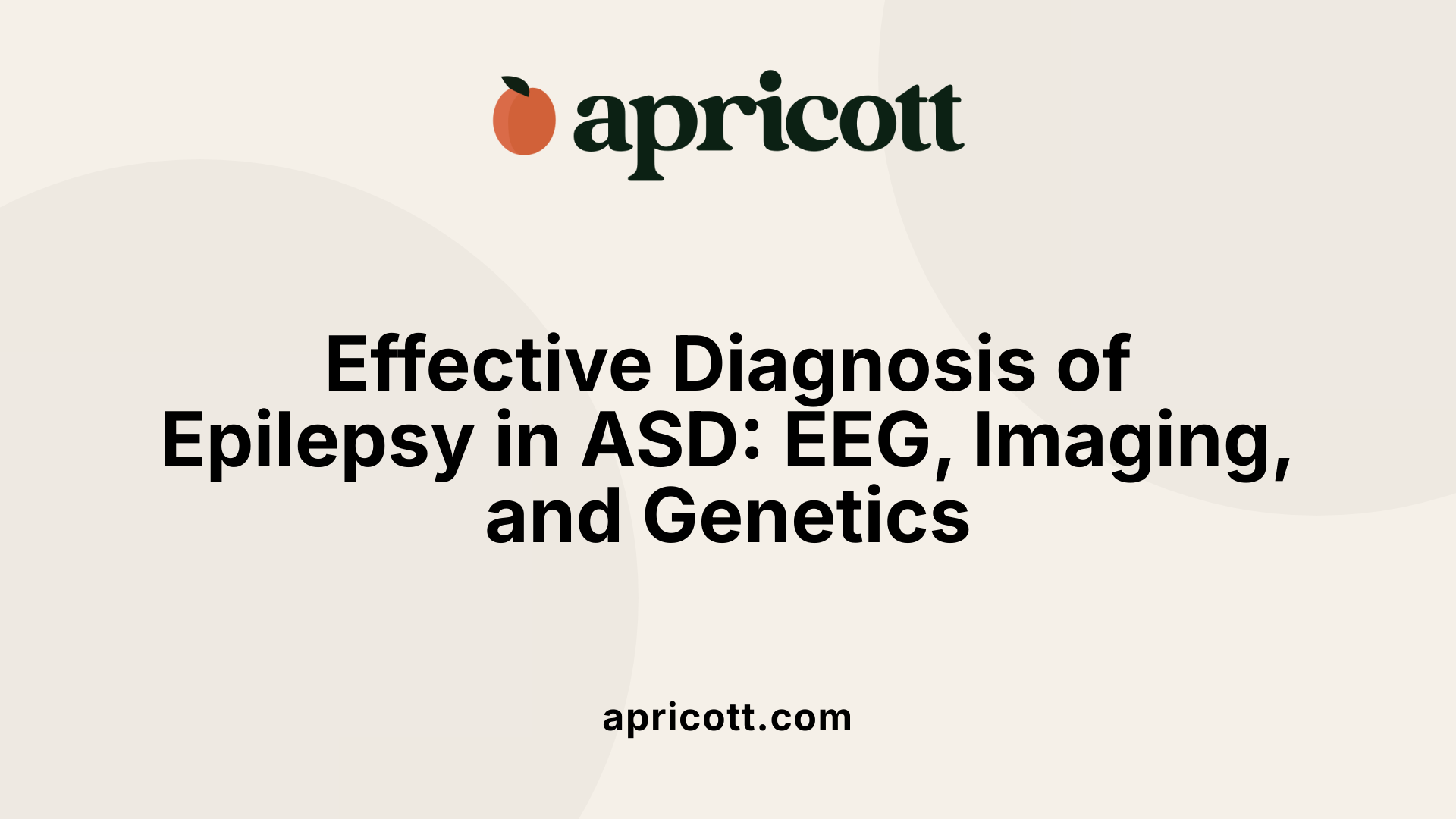
Use of EEG in detecting epileptiform activity
Electroencephalography (EEG) plays a crucial role in diagnosing epilepsy in individuals with autism spectrum disorder (ASD). Approximately 20-30% of ASD patients with epilepsy show epileptiform abnormalities on EEG, making it a valuable diagnostic tool. EEG helps in identifying abnormal electrical activity linked to seizures, guiding treatment plans and management strategies.
Brain imaging modalities
Brain imaging techniques, including magnetic resonance imaging (MRI) and computed tomography (CT), are important components of evaluating epilepsy in autistic patients. These imaging studies aid in detecting structural brain abnormalities that may underlie seizure activity. They complement EEG findings and help rule out other neurological conditions, ensuring a complete assessment.
Genetic testing
Genetic testing is increasingly important in cases where epilepsy and autism coexist. Identifying genetic abnormalities, such as mutations in genes like SHANK3, CNTNAP2, and NLGN4X, informs diagnosis and prognosis. Many of these gene variants impact synaptic function, contributing to both ASD and epilepsy. Genetic insights can also guide personalized treatment approaches and genetic counseling for families.
Early identification importance
Early detection of epilepsy in children with autism is essential for optimizing outcomes. Seizures can present subtly, sometimes mimicking behavioral traits of ASD, which complicates diagnosis. Careful monitoring for symptoms such as staring spells, stiffening, or rhythmic movements is necessary. Prompt evaluation using EEG, imaging, and genetic tests allows for tailored interventions, reducing seizure-related complications and improving overall developmental trajectories.
Treatment Approaches for Epilepsy in Individuals with Autism

Use of Anti-Epileptic Drugs (AEDs)
Treatment for epilepsy in individuals with autism spectrum disorder (ASD) primarily involves the use of anti-epileptic drugs (AEDs), such as carbamazepine, lamotrigine, and valproate. These medications aim to control seizures effectively. Notably, some AEDs like lamotrigine and oxcarbazepine may also provide benefits in improving certain behavioral symptoms associated with ASD. However, despite their widespread use, controlled clinical trials specifically evaluating AED efficacy and safety in ASD populations remain limited.
Variability in Seizure Control and Drug Responsiveness
Approximately one-third of children with epilepsy, including those with ASD, experience drug-resistant seizures and continue to have seizures despite medication. This necessitates multiple drug therapies or alternative treatment strategies. Additionally, AEDs, while lifesaving, can cause behavioral or mood disturbances, which is a particular concern in autistic children.
Non-Pharmacological Therapies
When seizures are refractory or when medication side effects are significant, non-pharmacological therapies are considered. Vagus nerve stimulation (VNS) is one such neurostimulation technique used to reduce seizure frequency. The ketogenic diet, a high-fat, low-carbohydrate dietary therapy, has also demonstrated benefit in managing some forms of epilepsy and can be employed in conjunction with other treatments.
Epilepsy Surgery Outcomes
In severe cases where seizures are localized and resistant to medication, epilepsy surgery such as focal resection may be an option. Such surgical interventions have shown promising outcomes, including not only improved seizure control but also enhancements in social behavior and cognitive abilities. This indicates that surgery may have broader benefits beyond seizure reduction for individuals with ASD and epilepsy.
Overall, treatment for epilepsy in ASD is most effective when delivered via a multidisciplinary approach that integrates medical management with behavioral and neuropsychological support, aiming to improve both seizure control and quality of life.
Behavioral Impact of Anti-Seizure Medications and Multidisciplinary Care

Behavioral and Mood Side Effects of Anti-Epileptic Drugs (AEDs)
Anti-epileptic drugs (AEDs) such as carbamazepine, lamotrigine, and valproate are widely used to control seizures in individuals with autism spectrum disorder (ASD) and epilepsy. While these medications are often life-saving, they can sometimes cause behavioral or mood disturbances, particularly in autistic children. These side effects may include irritability, mood swings, or increased anxiety, which can complicate both seizure management and behavioral therapy.
Interactions Between Epilepsy Treatment and ASD Behaviors
Some AEDs, notably lamotrigine and oxcarbazepine, have been reported to not only control seizures but also potentially improve behavioral symptoms associated with ASD. However, the response to treatment varies, and controlled clinical trials are limited. The overlap of seizure control and behavioral management makes epilepsy treatment in autistic individuals uniquely challenging, as seizures and ASD symptoms can mimic each other, risking misdiagnosis and improper treatment.
Importance of Collaborative Care Involving Neurologists, Pediatricians, and Neuropsychologists
Optimizing treatment for individuals with co-occurring ASD and epilepsy requires a multidisciplinary approach. Collaboration among epileptologists, developmental pediatricians, neuropsychologists, nurse practitioners, and other specialists ensures comprehensive evaluation and care. Neuropsychological evaluations aid in understanding an individual's strengths and weaknesses, guiding more personalized treatment plans.
Strategies to Optimize Quality of Life
Real-time, collaborative treatment planning maximizes seizure control while minimizing behavioral side effects, leading to improved overall well-being. Families benefit from integrated care that navigates medical, behavioral, and community resources, reducing the burden of managing multiple specialists. Emphasizing the child's overall wellbeing beyond seizures ensures support for behavioral challenges and social development, ultimately enhancing quality of life.
Applied Behavior Analysis (ABA) Therapy: Core Aspects and Benefits
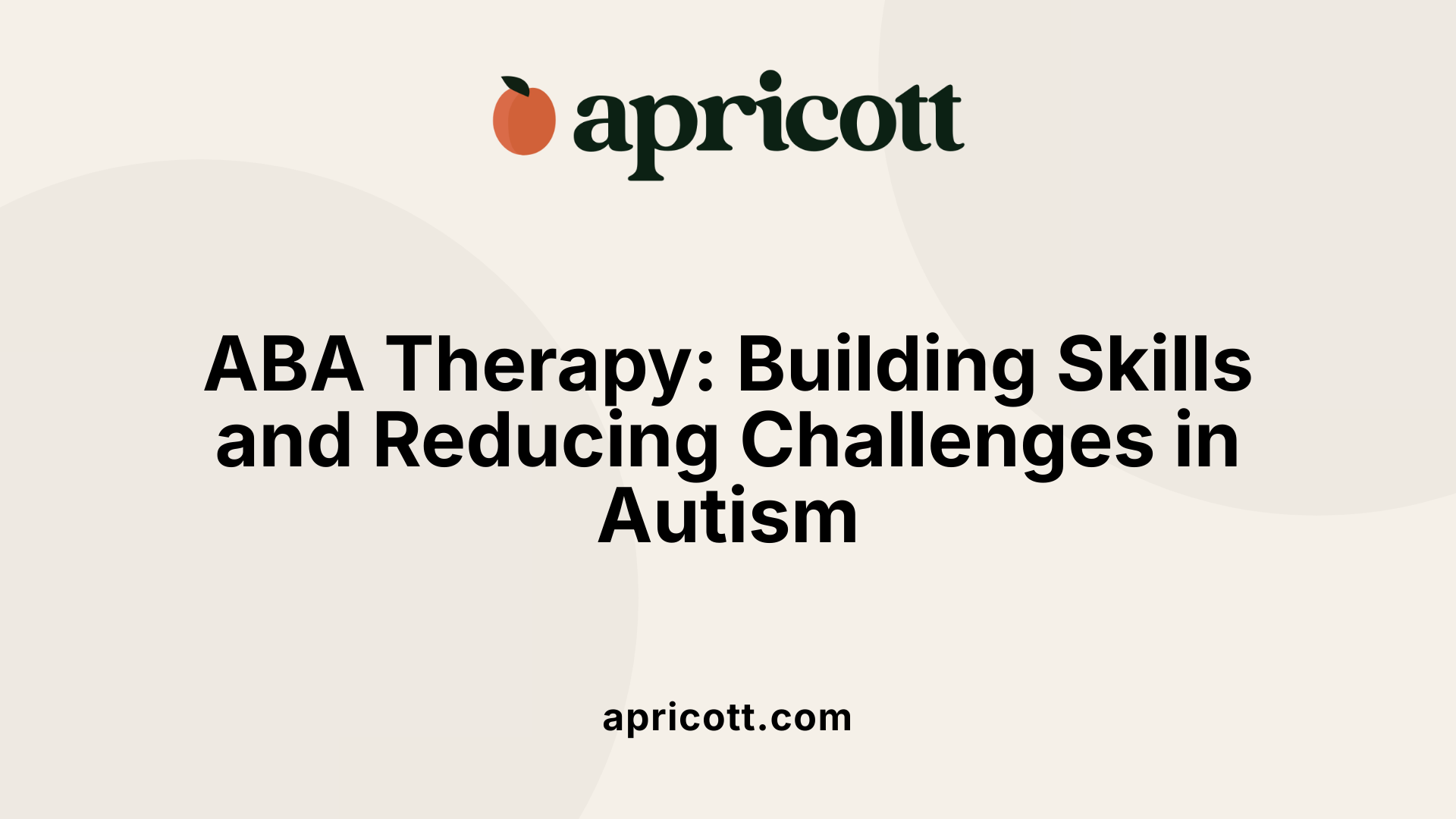
What is Applied Behavior Analysis (ABA) therapy and how is it used to support individuals with autism?
Applied Behavior Analysis (ABA) therapy is a scientifically-backed method focusing on understanding and modifying behavior through learning principles. It helps individuals with autism develop critical skills and reduce behaviors that may interfere with daily functioning.
ABA evaluates how environmental factors influence a person's actions and applies strategies like positive reinforcement to encourage desirable behaviors. Techniques include structured teaching methods such as Discrete Trial Training (DTT) and naturalistic interventions that build skills in everyday settings.
The therapy is personalized to each individual’s needs, beginning with thorough assessments to establish specific goals. ABA is usually intensive, involving many hours per week, and delivered by trained professionals like Board Certified Behavior Analysts (BCBAs) or Registered Behavior Technicians (RBTs).
ABA supports improvements in social skills, communication, self-care, and academic abilities. Its goal is to promote independence in home, school, and community environments.
Multiple studies affirm ABA’s efficacy, showing significant gains in language, social engagement, and adaptive behaviors, especially when therapy begins early and continues consistently over time.
Providers and Delivery of ABA Therapy

Who Typically Provides ABA Therapy for Individuals with Autism?
ABA therapy is delivered primarily by Board Certified Behavior Analysts (BCBAs). These professionals design and oversee individualized treatment plans tailored to the unique needs of each child with autism. The BCBA's role is crucial in ensuring that therapy remains evidence-based and outcome-focused.
Implementation by Licensed Therapists and Technicians
The strategies and programs developed by BCBAs are carried out by licensed therapists and behavior technicians. These individuals work directly with the child, conducting therapy sessions that promote skill development and behavioral improvements. Registered behavior technicians and aides operate under the supervision of BCBAs to maintain consistency and fidelity in interventions.
Family Involvement and Collaboration
Active family participation is central to the success of ABA therapy. Families collaborate closely with BCBAs and therapy teams to align goals, share progress, and reinforce learned behaviors at home. This partnership fosters a comprehensive support system extending beyond clinical settings.
Settings and Team Dynamics in ABA Service Delivery
ABA therapy can be delivered in various environments including specialized clinics, schools, and the home. Multidisciplinary teams often include behavior analysts, therapists, educators, and sometimes speech or occupational therapists, working together to address the complex needs of individuals with autism. This collaborative model ensures holistic care and maximizes the potential for meaningful improvements.
Goals and Objectives of ABA Therapy In Autism Care

What are the goals of behavioral analysis therapy in autism?
Behavioral analysis therapy, especially Applied Behavior Analysis (ABA), focuses on enhancing the lives of children with autism by improving their communication and social skills. This therapy promotes more effective interactions with others and supports the development of meaningful relationships.
How does ABA help improve communication and social skills?
ABA therapy uses evidence-based methods like positive reinforcement to encourage language development and social engagement. By systematically teaching skills, it helps children better express their needs and understand social cues, which are often areas of difficulty in autism.
In what ways does ABA enhance independence in daily activities?
ABA targets practical skills crucial for everyday living such as dressing, eating, and personal hygiene. Through breaking down these tasks into manageable steps, children gain autonomy and confidence, leading to greater self-sufficiency.
How does ABA therapy address maladaptive behaviors?
ABA employs strategic interventions to reduce harmful or disruptive behaviors that hinder learning and social integration. By identifying triggers and teaching alternative behaviors, it supports safer and more positive ways for children to cope with challenges.
How are ABA therapy goals personalized?
Treatment goals are tailored based on comprehensive assessments conducted by certified professionals like Board Certified Behavior Analysts (BCBAs). These individualized plans are regularly reviewed and adjusted to align with the child’s progress and evolving needs, ensuring the therapy is effective and relevant.
Through these approaches, ABA therapy aims to foster meaningful skill development, improve quality of life, and promote long-term progress for children with autism.
Comparing ABA Therapy to Other Autism Interventions
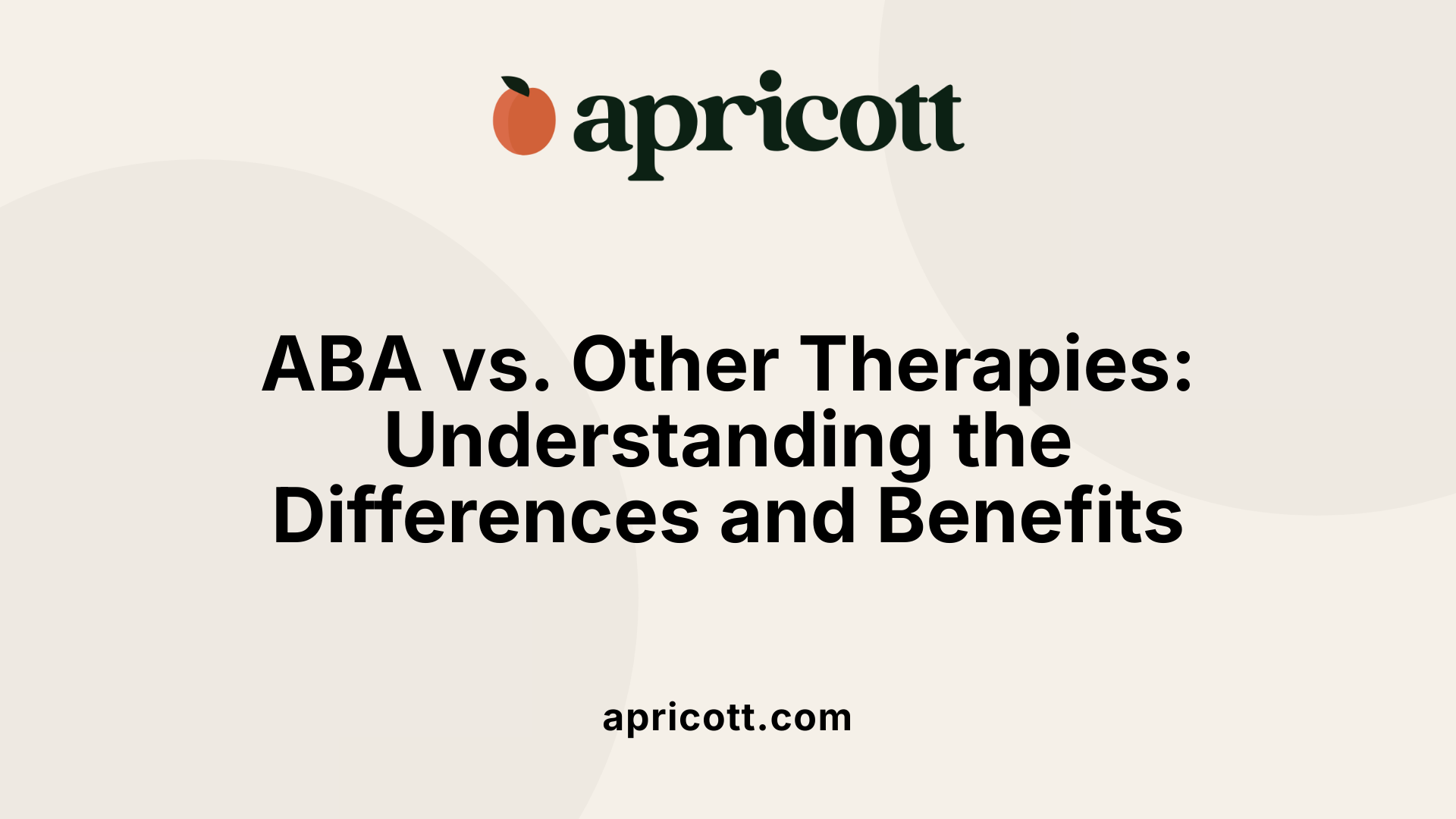
Behavioral focus of ABA
Applied Behavioral Analysis (ABA) therapy centers on observable behaviors and measurable progress. It uses structured interventions grounded in behavioral science to modify behavior, targeting skills such as communication, social interaction, and daily living.
Use of positive reinforcement and measurable outcomes
A cornerstone of ABA is positive reinforcement, where desired behaviors are encouraged by rewarding them. This method allows practitioners to collect detailed data, helping track progress and adjust techniques to improve outcomes consistently.
Differences from developmental or speech therapies
Unlike developmental or speech therapies that concentrate on underlying skill development or language improvement, ABA directly aims to change behaviors. Techniques like discrete trial training and pivotal response training are employed to reinforce specific behaviors.
Emphasis on individualized treatment plans
ABA programs are highly individualized. Treatment plans are carefully tailored to fit each child's unique needs, ensuring that interventions promote independence and functional skills effectively.
In summary, ABA distinguishes itself through its data-driven, empirical approach to modifying behavior using reinforcement, making it different from therapies that focus more broadly on developmental milestones or communication skills.
What a Typical ABA Therapy Session Looks Like

Session Length and Frequency
A typical Applied Behavior Analysis (ABA) therapy session lasts between 2 to 4 hours. These sessions usually occur multiple times each week, depending on the child's individualized treatment plan and needs.
One-on-One or Small Group Format
During ABA sessions, therapy is often conducted either in a one-on-one setting or small groups. This personalized approach allows the therapist to focus directly on the child’s specific developmental goals and adapt techniques as needed.
Teaching Methods: Discrete Trial Training and Natural Environment Training
Two primary teaching methods utilized in ABA therapy are Discrete Trial Training (DTT) and Natural Environment Training (NET). DTT involves structured learning with clear instructions and reinforcement for desired behaviors, while NET focuses on teaching skills within everyday, natural contexts, promoting practical use of learned behaviors.
Data Collection and Caregiver Involvement
Throughout the session, therapists systematically collect data on the child’s behavior and progress. This data-driven approach helps in monitoring advancements and adjusting strategies accordingly. Furthermore, caregivers play a vital role by reinforcing learned skills outside the therapy sessions, ensuring consistent practice and better generalization of behaviors.
Integrated Care: Addressing Both Autism and Epilepsy in Treatment Planning

Importance of multidisciplinary teams
Managing children with both autism spectrum disorder (ASD) and epilepsy requires a collaborative effort from various health professionals. This multidisciplinary approach ensures that both neurological and developmental aspects are addressed holistically. Given the complexity of coexisting seizures and behavioral challenges, multiple expertise areas must align to optimize treatment.
Coordination among neurologists, pediatricians, neuropsychologists, and behavior analysts
Specialists such as epileptologists, developmental pediatricians, neuropsychologists, and behavior analysts each contribute unique perspectives. Neurologists focus on seizure diagnosis and control, while pediatricians monitor overall growth and development. Neuropsychologists assess cognitive strengths and weaknesses, providing insights into brain functioning and behavioral symptoms. Behavior analysts help tailor interventions that improve social and communication skills impacted by autism.
Comprehensive evaluation of behavioral and seizure symptoms
Children with ASD and epilepsy often present overlapping symptoms, like staring spells or involuntary movements, which can be hard to differentiate. Thorough evaluation involving EEG testing, neuroimaging, and behavioral assessments is critical to distinguish epileptic seizures from autism-related stereotypies. Neuropsychological evaluations support individualized therapy plans that balance seizure management with behavioral supports.
Benefits of integrated treatment pathways for children and families
Integrated care not only streamlines diagnosis and treatment but also eases the family's navigation through complex medical and therapeutic services. Coordinated care teams offer combined appointment scheduling and unified treatment goals, reducing stress and improving adherence to management plans. This holistic approach enhances quality of life by addressing both seizure control and developmental needs, ensuring children receive the most effective support across domains.
Bridging Gaps in Care for Autism and Epilepsy
Understanding the intricate links between autism and epilepsy is essential for advancing diagnostic accuracy and therapeutic effectiveness. Through genetic and neurophysiological insights, alongside robust behavioral interventions like ABA therapy, clinicians can better support individuals navigating both conditions. Emphasizing multidisciplinary collaboration and personalized treatment plans enhances outcomes and quality of life for affected individuals and their families. Continued research and integrated care models will be pivotal in unraveling complex mechanisms and refining interventions tailored to this unique intersection of neurodevelopmental and neurological challenges.
References
- Autism with Epilepsy: A Neuropsychopharmacology Update
- Treating Autism & Seizures Through Collaboration With CAPE
- Epilepsy and Autism: Is There a Relationship?
- Epilepsy and Autism: Understanding the Overlap
- Autism & Seizures (Epilepsy) | Ohio State Medical Center
- What Does an ABA Therapy Session Look Like?
- Applied Behavior Analysis (ABA)
- Applied Behavior Analysis (ABA)
.svg)
.svg)








